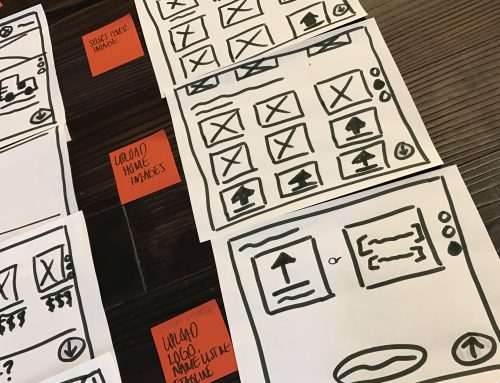If you’re a technology company you should always be measuring the ROI for your clients and for yourself. ROI tells you whether it makes sense to build an application, or even whether it makes sense to build a feature for an application.
Let’s Start with Why
Why do you care what your return on investment is? You’ve got revenue coming in. You’ve got investors or you’re successfully bootstrapping. Or maybe you’re just contemplating the Next Big Thing, which you know will be disruptive and revolutionize the world as we know it. Um… okay, now let’s think like business people.
- If you have revenue coming in right now, bully for you! You’re ahead of 90% of the tech startups out there. But even with a trickle or a stream of revenue, you have to know your costs. For instance, how do you know how much to charge your existing customers? And what about new customers, same price? Or are you adding features, which adds to the cost and the benefit of your product? You must know how much it costs you to make the product in order to know what you should sell it for. That is your ROI.
- You’ve got investors, who cares how much it costs? Well, probably the investors do. Or will do, at the next shareholder meeting when you show them that famous hocky-stick shaped revenue graph, which might be looking a little flat. Even with funding, your ROI is the difference between profit and loss. You gotta know it.
- You’re successfully bootstrapping. Good for you! But even more reason to know the costs, if only to see where you can keep it down. Bootstrappers, like everyone else, have to be bottom-line conscious. And that’s all about working out just what it costs you to have your buddy write the code, that guy on eLance to design the UI, and your girlfriend to figure out the marketing plan. There are costs there – they’re just hidden.
- This is the Next Big Thing, you’ll worry about ROI tomorrow. Oh you will worry tomorrow, you really will. Tomorrow someone else who is also working on The Next Big Thing will have figured out how to build it cheaper and better than you. And that’s who your customers will be buying from.
Calculating the ROI Step-by-Step
Calculating your ROI is pretty easy. It’s just math. Follow these basic steps. Detailed instructions later in this post.
- First: Look at your development road map and make a list of all the features you plan to develop this year.
- Second: Next to each feature, write the benefit to the customer for that particular feature.
- Third: Assign a dollar value to each benefit. (More about how to do that, below.)
- Fourth: Total the dollar benefits. This is the value of this application, or this release to the customer.
- Fifth: Calculate the costs for development and sales and subtract that from the dollar benefits for each feature. This is your ROI.
Because you’ll likely end up presenting this to customers, investors, or C-level people in your organization, you should have a context for each value you assign to support your assertion. (e.g. if you say using your app to make purchases while on the go will increase sales 15%, be sure to have a study that shows people want to buy while on the go, and 15% of them will make new purchases.)
Assigning a Dollar Value to a Feature
To assign a value to a feature, you need to look at how the consumer will use that feature. If it’s a time-saving feature, such as allowing users to sign PDFs on their iPads without ever printing and scanning, then you can figure out a rough estimate of the time this feature will save the consumer (ie. thin increase in productivity). Then multiply the time saved by the value of that worker’s hourly wage over a month and you have a rough estimate of the value of that feature to the consumer. This is also a great way to sell your application to customers.
Example:
If a secretary estimates she spends 30 min a day printing, presenting a document to her boss to sign, then scanning and email that document back to the sender, you have a benchmark for that cost savings to the customer:
Time saved per day = ($50hr x 0.5) $25 per day, per user.
Time saved per month (22 working days) per user = $25 x 22 = $550
That feature is equal to $550 per mos to your user in increased productivity. Now you can tell the customer what their return on their $2 investment will be.
Calculating Your ROI
But your ROI is slightly different than the customers. You have to know the cost and revenue for each feature you have on your product road map in order to make an informed decision about what features to include. Start by calculating the development costs.
Calculate Development Costs
First figure out how much each feature will cost you to build and deploy (and sell, if you’re planning a marketing campaign to promote the new features or application).
If you’re using an agile methodology, it should be readily apparent exactly how much each feature will cost to build. It’s a factor of your engineer’s hourly costs. Don’t forget to add in management costs, advertising costs broken out by each feature, and other non-obvious costs. For example, does the new feature require a higher/more expensive tier in your hosting service? Those costs should be factored into each feature as well.
Example:
Engineering costs = ($120hr x 10hrs) $1200 Feature 1
PM costs = ($100hr x 2wk sprint)/5 features = $1600 Feature 1
Marketing costs = $2000 marketing budget/5 features = $400 Feature 1
The total cost to develop and deploy Feature 1 is $3200.
How Much Does Each Feature Contribute to the Value?
The return on your investment is the revenue generated by this feature minus the cost to develop it.
If you sell the application to the user for $2 and you have 20,000 customers, then your revenue stream is expected to be $40,000 for the entire app. Because each feature is of different value to your customers, you assign them a percentage of that total revenue stream based on the value to the customer you previously calculated.
If you’ve worked out the value of each feature to the consumer, then you can get the total value of the application to the consumer: 550 + 100 + 50 + 75 + 500 = $1274. Now work out what percent each feature contributes to that value:
Feature 1 = 550/1275 value = .43
Feature 2 = 100/1275 value = .07
Feature 3 = 50/1275 value = .05
Feature 4 = 75/1275 value = .06
Feature 5 = 500/1275 value = .39
Immediately you can see that some features will be very valuable, and others less so. Once you’ve subtracted the cost of building each feature, you’ll know whether you want to include those low-value features in your development plan.
Find the ROI by Feature
To calculate the ROI per feature, multiply the value percentage by the total revenue for that app:
$40,000 x .43 = $17,200 Value for Feature 1 (if you sell the app to 20k customers for $2)
$17,200 Value – $2300 Cost = $14,900 ROI
Here’s an example of a feature that has high cost and low value:
$40,000 x .05 = $2,000 Value for Feature 1 (if you sell the app to 20k customers for $2)
$2,000 Value – $2300 Cost = – $300 ROI <——— consider leaving this feature off your development plan because it is costing you money.
Now you have some idea of what the return on your investment for each feature actually is. This is important because you’ll discover that some features simply don’t drive adoption or purchase decisions and so don’t justify the cost to build. An example might be being able to change the color scheme of the app, which could cost $1500 to build but provide no real benefit or attraction for the user.
What About Intangible Benefits?
In my economics and law class, I famously argued with the teacher that you can’t assign dollar values to human emotions – intangible benefits. But, I was completely wrong. That’s all advertising ever does. It figures out how to translate intangible human emotion into money. Advertisers know that emotions sell. So bring your user experience and marketing people into the conversation. They can help judge the value to the consumer for features like custom skinning which help to sell the app and make it likable even if it won’t translate into a direct productivity value.
In the End, Less is More
After all the calculations are complete, you still may be unsure about how large a feature set to develop. In that case, the best rule of thumb advice I can give you is to develop fewer features. And make sure the ones you do develop are valuable to the consumer, well designed, and correctly implemented. Looking over your feature list and eliminating those that have a low ROI will not only save you money, but increase the consumer adoption rate. In technology development, more is almost never better.






